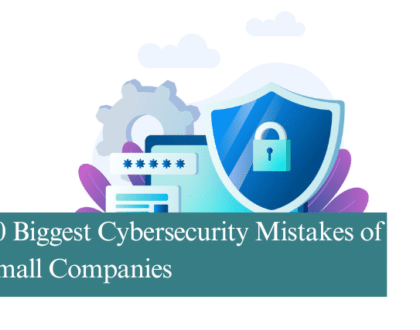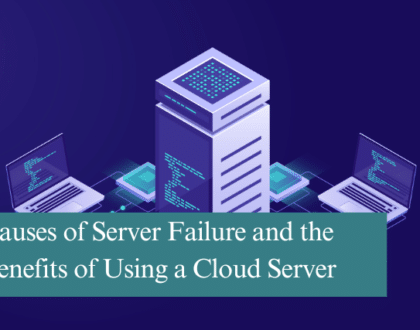
Cyber security threats are more numerous today than ever before. Cyber security professionals must continuously work to defend against many types of cyber threats every day. As cybercriminals become savvier, so do their methods.
What motivates cyber attacks? Criminals may be after money or valuable data owned by businesses and individuals. Today, it’s not only the large corporations that are targets of these malicious attacks; it’s also individuals. Hackers can use money and sensitive data to gain access to financial accounts and perform other damaging actions. This is why cyber security is essential.
We’ve put together a list of the most common cyber attacks going on today. Let’s get started.
- Viruses
Viruses and malware continue to be huge problems in cyber security. Malware can include ransomware, infections, bugs, keyloggers, and more. These are malicious software developed by cybercriminals to steal sensitive data and money.
Malware may start when someone clicks on a phishing email or file, resulting in malicious software becoming installed on the device they’re using. When malware has become activated, it can:
- Gain access to critical network components, limiting user access (such as with ransomware)
- Install more malicious software
- Receive information secretly by sending data from the hard drive (also called spyware)
- Disrupt individual components, making the system inoperable
Some of the most common types of malware include:
- Viruses
- Worms
- Trojans
- Polymorphic software
- Ransomware
- Rootkits
- And more
- Emotet
Emotet is a banking Trojan that’s been around since 2014. The malware was designed to download to your computer and steal sensitive and private information. However, later versions of Emotet also included spamming and malware delivery, along with banking Trojans.
This malware works by evading antivirus detection. The malware acts more like a worm and spreads to other computers. The infection can be spread by malicious scripts, macro-enabled files, or a malicious link. Emails with Emotet may look legitimate or as if they’re coming from well-known companies.
- Denial of Service (DoS)
A denial of service (DoS) attack is a cyberattack that overloads a computer or network, making it impossible to respond to requests. A dispersed denial of service (DDoS) attack works in much the same way, except the attack starts on a network connection.
These denial of service attacks work to overwhelm a target’s resources with traffic until the system can’t handle additional requests for service. As more requests come in, the network tries to respond to each one, draining its resources in the process. The result is that the network slows down and may even shut down.
The goal here is to interrupt the effectiveness of the target’s service. For instance, a competitor may hire a hacker to take down a competitor’s site. However, DoS and DDoS attacks may also act as the first part of a much larger attack.
- Man in the Middle (MITM)
Man in the Middle is a cyberattack where the attacker secretly intercepts and relays messages between two parties. These parties believe they are communicating directly with one another. This is an attack that works like eavesdropping, where the attacker intercepts and then controls the conversation. Attackers use this method to steal sensitive data.
These attacks are serious threats as they give the attacker access to sensitive personal information. This may include login credentials, account details, credit card numbers, and more. The hacker can steal any of this in real-time without anyone realising it.
- Scamming
Phishing attacks are still very common and often use fake information, such as an email, to trick the recipient into opening and following instructions contained in the message. This may include providing personal information, such as login credentials, a credit card number, and more.
These attacks may also try to install malware on the user’s device.
- SQL Injection
Structured Query Language (SQL) infection is another type of cyberattack where malicious code is inserted onto a server. Once the server has been hacked, the information it contains is leaked.
These attacks can be as simple as installing malicious software onto a vulnerable (insecure) website’s search field.
- Password Cracking
Passwords are valuable for hackers. When they have a password, they can gain access to a wide range of personal or business data. These attacks usually rely on human psychology. They try to lure a person into not following security protocols. When this happens, the attacker can steal sensitive data.
- Account Takeover
Account takeover (ATO) happens when a cybercriminal uses stolen credentials to take over an online account. This can lead to identity theft, fraud, data breaches, and more. Criminals may purchase credentials online or by launching different attacks, including phishing attacks or data breaches.
Hackers may also use bots that automatically try to access various sites. The bots try different combinations of passwords and usernames to log in until they have found verified credentials.
How to Protect Your Company from Cyber Attacks
We understand that protecting your company from cyberattacks can be challenging. You may not know where to start. But here are some steps you can take to ensure your company is more secure against cybercrimes and the hackers behind them:
- Train & educate employees on following security protocols and how to spot cyberattacks. Training should also include what to do if the company network is breached.
- Keep all software and systems updated regularly.
- Secure networks and databases.
- Create security policies and practices.
- Use data breach prevention tools, including intrusion detection.
- Use antivirus and antimalware software.
- Enable multi-factor authentication
- Monitor and manage all cloud server provider accounts
- Secure, protect, and back up sensitive data.
- Assess your company’s risk for cyberattacks.
Summing It Up
Cybersecurity is an essential part of doing business today. It’s necessary to develop the right solution for your business, along with educating and training employees on how to handle cyberattacks.
If you’re struggling with protecting your company against cyberattacks, be sure to reach out to a professional who can help you get started. They can recommend the right solutions that fit your business.
With the right cybersecurity solutions in place, your business will present a harder target when an attack does come.
Recommended Posts

10 Biggest Cybersecurity Mistakes of Small Companies
18th April 2025

The Importance of Planning in Business IT Solutions
11th April 2025

